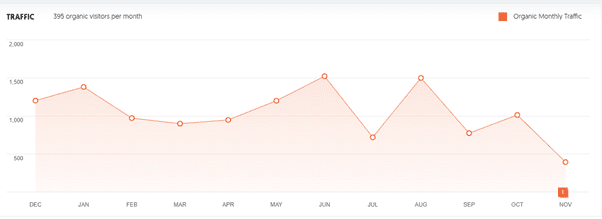
Episode 264: How to Conquer Distractions and Move Your Freelance Business Forward – Interview with Dorothee Racette
12/14/2020
Episode 265: From Stagnant to Vibrant – How I Rebuilt My Translation Business – Interview with Marguerite Delacroix-Storm
01/11/2021It’s that time of year, time to look back, take stock, and plan for the next year. I always do an annual review, make a yearly plan, and then break it into quarterly goals and objectives. Do you?
I thought I would share this year’s results with you and give you a tool to do your own review and plan for 2021.
I’ve done annual reviews and created plans for my freelance translation business for the past six years, and it has really paid off; in increased income, better clients, and better job satisfaction. However, 2020 was different. I think we can all agree on that. A global pandemic can change a lot of things. Needless, to say, I did not reach my income goal this year.
Here are the results for this year. These are just for my translation business and do not include any results for “Marketing Tips for Translators” courses and workshops etc. That part of the business made up for the loss in translation income, thankfully and the courses and workshops were still popular, despite the pandemic.
The health of my translation business
The first thing I look at is the health of my business. Here are some things I analyze:
- The total number of clients – This year it was about 60. Included in these are clients I’ve had for several years, but not one-off, small jobs.
- Revenue for the year – My income from translation jobs (including localization, transcreation, and proofreading/editing) was about 40% lower than last year. The main reason was that I lost two direct clients who had previously provided regular, significant projects. One of them decided to cut out the “smaller” languages, most likely due to the economic downturn caused by the pandemic. The other one is a large, multinational software company that decided to stop using freelancers altogether. None of us translators know what they will do instead, perhaps create an in-house translation department. Those two clients had made up 30% of my translation income for the previous years.
- Annual profit – My yearly profit was only down 30%, though. The pandemic also resulted in lower costs for the business, less travel, for example.
My website has always been essential in my marketing and has brought in several direct clients and exciting projects, so I also look at the year’s website performance.
The first thing I look at is the number of unique visitors. This year I had almost 12,000 unique visitors to my website, a growth of about 7.5%. I guess the growth rate could be better, but I am quite happy with the result. Here are some screenshots from Ubersuggest, where I did the analysis:

I also keep track of the keywords I want a ranking for. Ubersuggest shows monthly ranking results. This chart does not give my ranking goals justice, but there are 20 keywords for which I rank in position 1 to 3, and 51 where I rank in position 4-18, which is still on the first page in Google.

Enjoyment of my translation business
The second thing I analyze is the enjoyment of my business. If I want to work as a translator for many more years to come, I have to enjoy it. And if I enjoy it, the results are usually better, too.
Here are the things I look at:
- The projects I am most proud of and the ones I enjoyed the most. By analyzing this and writing it down, I can plan to find more of these types of jobs and clients in the future. Other things I look at are what marketing methods brought in the work I enjoyed the most. This was almost exclusively connections on LinkedIn this year. I was more active on LinkedIn, and this brought in new inquires directly or through referrals. I also look at what projects and activities I did not enjoy. Those are things I should try to do less next year.
- What worked well – It is always good to look at what went well. I should keep doing those types of things, and it is also motivating to take stock of positive things, not to dwell on just the negative stuff. This year, I was able to maintain all my best boutique agency clients and find more of the same type. I really enjoy digital marketing projects and transcreation projects and have been able to find more boutique agencies that can give me well-paid jobs in this area. I was also able to onboard three new direct clients toward the end of the year. Two of these look promising for regular work, thus replacing the two I lost. One of them can provide me with smaller, exciting work but will probably not have large volumes. All three of them found me online, either through my website or on LinkedIn.
- What didn’t work well – I had planned to do more direct outreach to potential direct clients, but I completely lost my motivation and energy to do so when the pandemic hit. Instead, I focused on taking good care of my existing clients. Above all, I shifted toward just caring for my well-being to cope with the pandemic. I guess you can say my priorities shifted from focusing on business and marketing to self-care and activities that were good for my mental health. I noticed I had less interest and desire to work late into the evenings and instead found myself painting, knitting, and watching Netflix, and I was ok with that. Apart from simply dealing with the pandemic, we also lost our dog and cat within 3 weeks of each other this fall, and I had to take time to grieve and heal from that too.
- Goals – This year I was still able to achieve some of my goals, just not my income goal for my translation business. However, the income from translations was higher than ever before in 2019, so perhaps I am comparing it with the wrong year. My goal was to find four new specialized niche agencies, and I started regularly working with 7. I also wanted to find four new direct clients and ended up finding 3, which was pretty good.
Related: Six Months Into the Pandemic: What’s Changed and What Freelance Translators Can Do
Planning for the next year
Based on all these things, I then make a general annual plan for the next year.
I believe it is essential to make a plan and to make it as specific as possible.
I set an income goal and break it down into monthly income goals to keep track of. I set up three goals and make them specific. This can be the number of clients, type of clients, geographic areas, etc. When creating my goals, I use the SMART method.
This means that goals should be:
S – Specific
M – Measurable
A – Achievable
R – Relevant
T – Timely
When you create goals, they should be narrow, achievable, and related to your vision. Write your goals down. Give them a deadline. Hold yourself accountable. Make sure they’re realistic.
Here is an example of how your goal can transform from vague to specific.
Vague: “Next year, I want more clients.”
Specific: “In January am going to use LinkedIn to start following other professionals and create interactions with ten companies that I would like to work with. Then I will reach out to them and offer my services.”
Related: How to use SMART goals for your freelance translation business
I revisit and fine-tune my target market and ideal clients, my core services, and my offers, and I evaluate whether I should add or remove any services. I also list the main marketing strategies I will focus on, break them down into specific tactics, and put them into a timeline. Examples of tactics can be updating the website, researching potential clients in a particular industry, creating lists of potential clients to contact, conferences to attend, marketing material to develop, etc.
Get your workbook to review your business and plan for the next year
As a holiday gift this year, my newsletter subscribers receive a workbook that takes them through all these steps – annual review, annual business plan, and quarterly marketing plans. This year has taught me that plans can change in an instant and that we need to be more flexible, and take more action. By having a practical quarterly plan, you both review your business health more often, and you can pivot or change direction more efficiently. Plus, it gives you an incentive to keep a close eye on your business’s health and enjoyment.
If you are not a subscriber, you can get a copy of my business review and planning workbook here:



